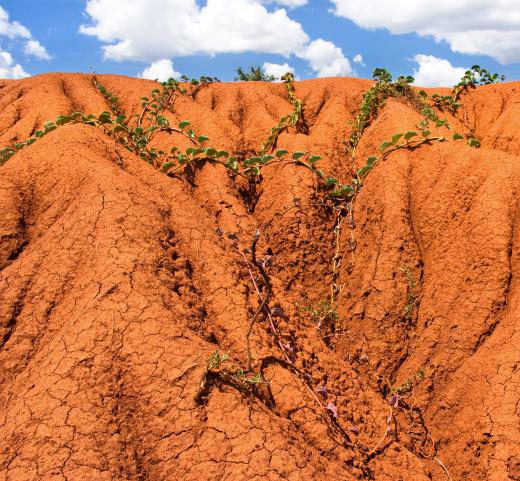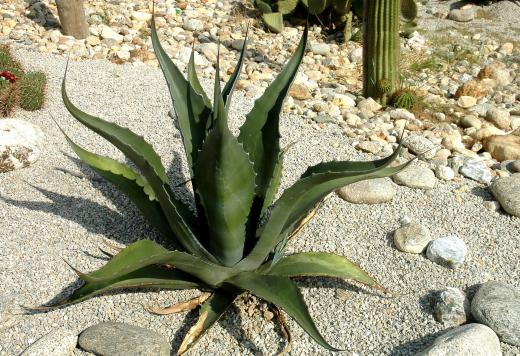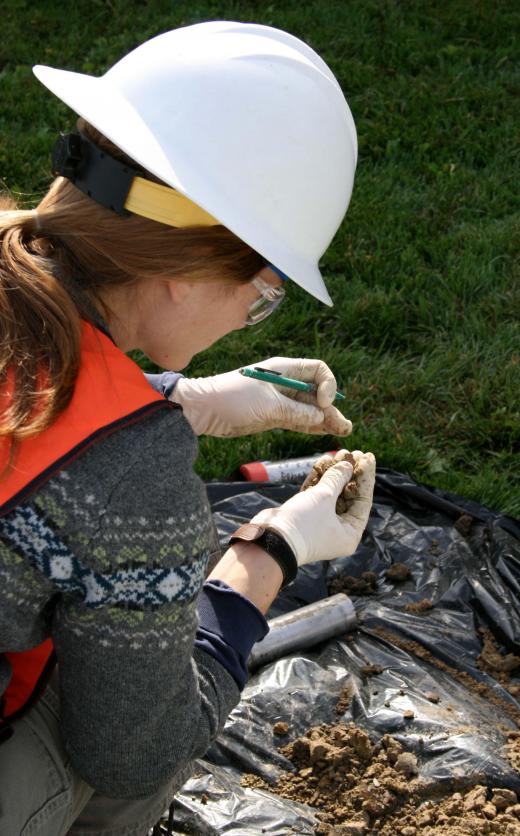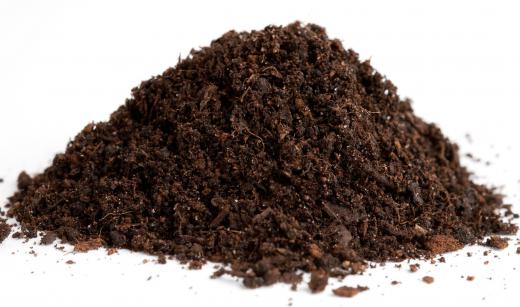What is Soil Structure?
Soil structure is the shape that the soil takes on based on its physical and chemical properties. Each individual unit of soil in the overall structure is called a ped. Soil structure is most easily determined by taking a sample of soil that has not been disturbed and looking closely at its shape. The shape of the soil will fall into one of the following categories: granular, crumb, blocky, platy, prismatic, columnar, single-grained, or massive.
Granular soil looks like crumbs. This soil is found where roots have permeated the soil. It should not be confused with crumb soil, which is very porous. Each individual particle of crumb soil does not fit together with each surrounding ped because the shape of each individual ped is roughly spherical.
Blocky soil looks like irregularly-shaped blocks. The form of each individual ped is caused by the peds that surround it. Each block ped can be broken into smaller block peds.
Platy soil peds are thin, flat, and plate-like. They are oriented in a horizontal direction. This structure is commonly found in compacted soil.
Prismatic peds are vertical columns that can be multiple centimeters long and are found in lower horizons. Columnar peds are also vertically oriented columns but are topped with a salt "cap." Columnar soil is found in arid regions of the world.

Single-grained soils are divided into individual soil grains that do not stick together and generally remain loosely-packed. This structure is found in sandy soils. The massive soil structure, on the other hand, appears in solid masses and does not have the propensity to break apart easily under light pressure. This structure is associated with very finely textured soils, like clay.

Soil structure is determined by many factors, including climate, physico-chemical processes, and biological processes. Weather cycles have a significant effect on the structure of soil. Freezing and thawing, wet and dry, clay translocation, and other various pedogenic — soil-forming — processes affect the whole soil structure to differing degrees throughout the whole structure. The effects are the greatest in the top layer, where the exposure is direct.

The phase changes of water — solid, liquid, and gas — have a dramatic effect on soil structure. These phases are influenced by the temperature of the soil. Running water causes soil from one location to erode away and be deposited in another location. The freeze-thaw and the shrink-swell process that water phase changes determine change the volume of the soil.

Biological processes include the influences of organisms of various sizes in the soil. The amount of organic matter in the soil is a factor how soil aggregates and separates into peds. Animals that live in the soil help pack the soil together in different ways. The secretions of these animals also influence the structure of soil.
Another consideration in discussing soil structure is the ability of the soil to support plant life. Soils are made up of four different components: minerals, organic matter, air, and water. Soils that contain 90 percent mineral and around 10 percent organic matter, also called humus, are able to support plant growth well. Soils that contain small amounts of organic materials have a difficult time sustaining plant life.
AS FEATURED ON:
AS FEATURED ON:















Discussion Comments
Too much organic matter can be as bad for supporting plant life as not enough. It's a balance.
The type of soil structure best suited to plants can vary a lot or a little depending on the type of plant. A cactus obviously needs different soil texture from what a tree needs, for example.
Very informative, thank you.
Post your comments